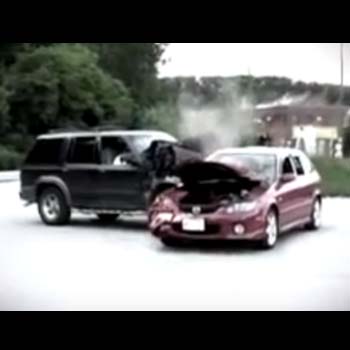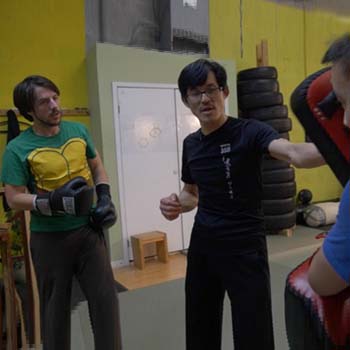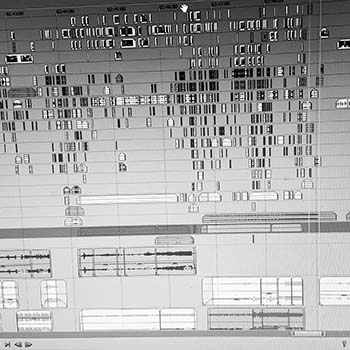This blog will explain the basics of how a student filmmaker can create intense Hollywood action sequences similar to the video above. The talent in our short film had limited experience with combat, but with a bit of training coupled with rehearsal and some editing tricks, we were able to pull of an exciting fight sequence. (I hope you’d enjoyed it anyway).
As we continue to create our 13 episode web series, we will be teaming up with Bamboo Kung Fu School this month to help the actors get into their roles by going through some fight training sessions with Master Kin Sze!
Be sure to check out our freaturette on action. Forgotten Corpses is a web series that we have been working on for half a year, starring Greg Willmot and Lee lawson, we are going to start principle photography soon so stay tuned and without further ado, here we go:

Prerequisite:
There are a few things you should know before we dive in. As a filmmaker, you should understand the 180° rule and the rule of thirds. This will help with framing your shots correctly and help make them look professional. Be sure to watch this video for more information on framing.
In addition, it’s also good to understand video scopes and know how it can help with camera exposure. Be sure to check out this video on how video scopes can help you determine if your footage is properly exposed.
Knowing how to artistically light a scene will also add more value to your production. Check out this lighting breakdown on how they’ve lit a typical classroom.
In conclusion, there is plenty of information on filmmaking on the internet. Be sure to spend some time and research on how profesional crews work together to pull off a production. One of my favourite directors on action is Michael Bay. Be sure to check out this video on how he directs his crew members. In the documentary, one of his crew explains that Bay will be setting up 2-3 scenes in advance while he is still working on scene 1! That’s one of the ways he is able to squeeze his film days into a 12 hour shoot period.

Two Canon C100 recording at once to get optimum coverage from our shoot last year.
Getting Plenty of Coverage:
It’s important to get as much coverage as you can because if the shot didn’t work as planned, the film editor has several options that they can choose from to save it. My standard coverage procedure is to take a wide shot of the entire action sequence, then follow up with a series of close ups of the subjects. Then, I finally move in to grab extreme close ups where needed.
If you have 2 cameras one option is that you can film the sequence simultaneously where one camera can be a close up and the second camera can be used as a medium shot. A second option is that one camera can cover subject A and the other subject B. You can cover twice the amount of material with 2 cameras and continuity will be easy to match in post.
In one of the shots of our pilot we covered our action sequence with three cameras simultaneously all rolling at once. I instructed two camera operators to cover our main actors. Then the third one took a wide shot of the entire sequence on a drone. We had to ensure that we did not see our equipment and other camera operators in the shots. it was difficult to hide, however, we made it work. That brings me to my next topic… rehearse like crazy.

Rehearsal Is A Must:
Rehearsal can be broken down into two parts. One is for the actors, and the other is for the camera operators as some shots need proper timing. for instance, if they are on a jib or camera stabilizer. The more time you have for the rehearsal, the easier the editor’s job will be as they don’t need to use as much editing to fix the scene to hide imperfections.
For example, there was a shot in our pilot where two actors collided into each other and fell hard onto the ground. The actors had to rehearse slowly. After several practices, we increased the speed of their fight sequence. We also added a camera shake at the moment of impact to create the feel of more pain. The actors and camera operators all need practice to get the timing right in order to sell the shot.
In addition to this, we also added dust and sound effects in post production to show more impact. Each element in the filmmaking process assists in making the shot work.

Its All About Making the Cut:
Film editing plays such an important role in the filming process. An editor can convey an emotion in so many ways by using music, holding out certain shots longer or even shortening them.
In our pilot, the two main characters have a moment where the actress touches the actors face after they’d fought off several zombies. In editing, we played out that moment and made it last several seconds longer than it was actually filmed on set. This created a better sense of connection to the characters in the story.
Another example of how editing can effect audience is in the excerpt below from our short film Last Breath starring Lindsay Ogus. In the opening scene, there is a hostage being sprayed with water. In reality, the water was only sprayed onto her face for two seconds, thus, she was able to hold her breath to avoid from drowning. In the editing we were able to extend the time by making it seem longer and more dangerous. Catch the full making of the video on Facebook here!
There are tons of editing tricks that you can use to create a better experience for the audiences which goes beyond the scope of this blog. For more on editing be sure to check out some of my previous articles.
Ka-Boom!
Filming action sequences can be a lot of fun when you have a great crew that can work together like a well lubricated machine. Safety is the number one priority on a film set. Whatever you do make sure you practice slow, know your crew and talent’s limitations and know where the nearest hospitals are. If you have any questions on video production, be sure to contact us. And like always, happy editing!
